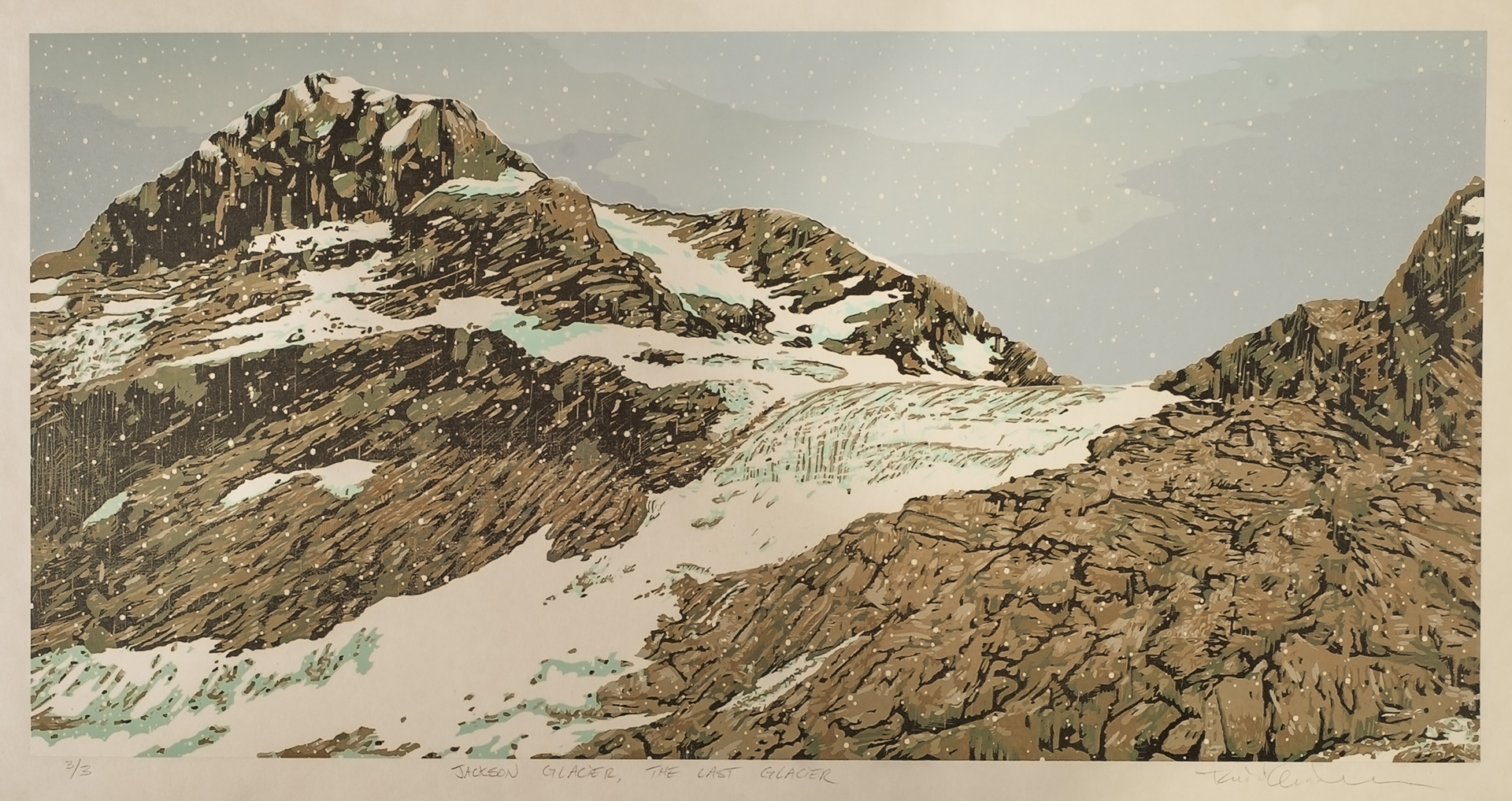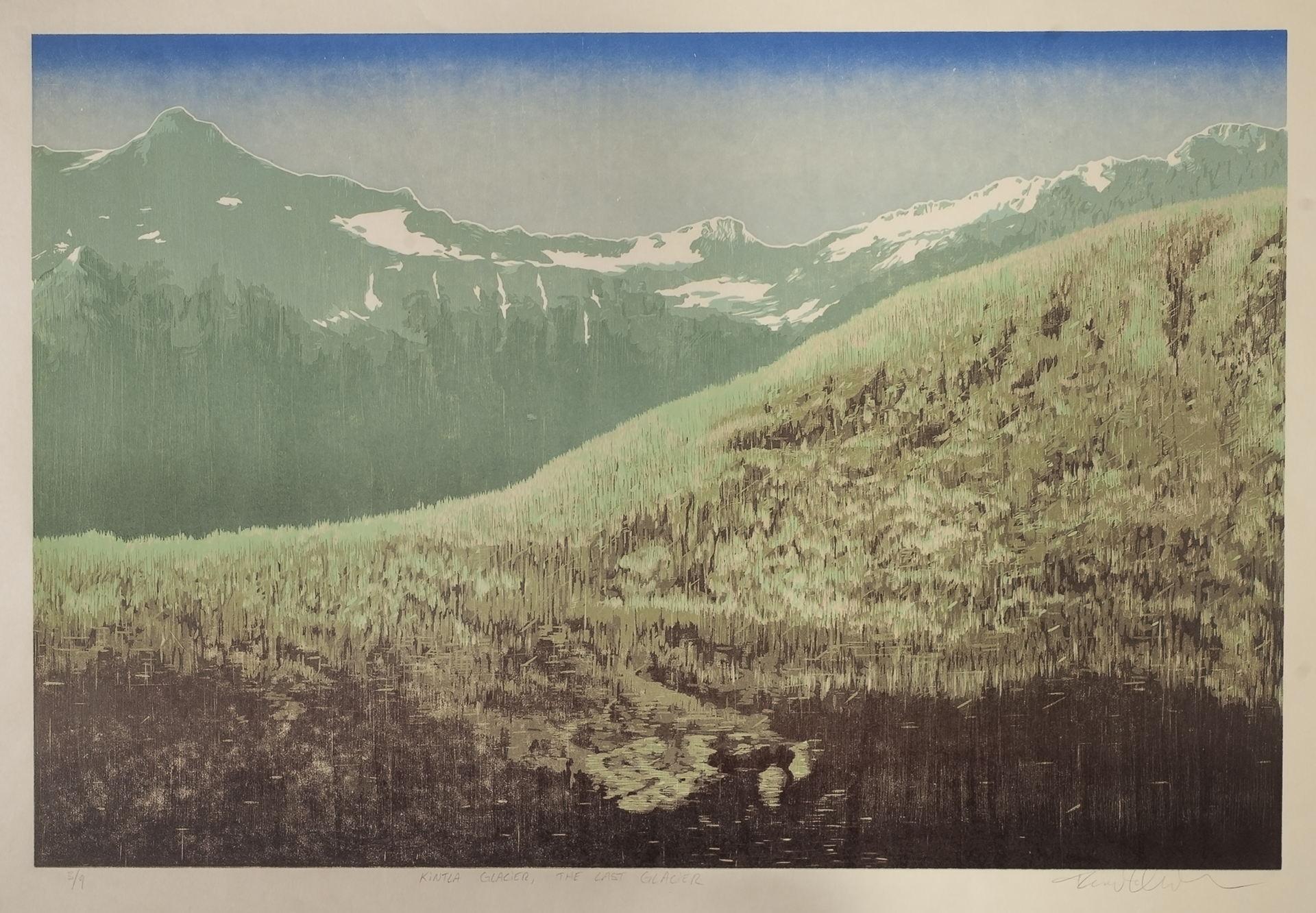Todd Anderson was born in Rochester, Minnesota, USA. Anderson received a BFA from the University of Wisconsin-Madison and a MFA from the University of New Mexico in Albuquerque. Over the course of several years he apprenticed and eventually became a fine art collaborative printer. For the last decade Anderson has worked as a university professor. Anderson’s artwork has been acquired by notable institutions such as the Metropolitan Museum of Art, the Davis Museum at Wellesley College, The Jordan Schnitzer Family Foundation, the New York Public Library, Stanford and Yale Universities, and the U.S. Library of Congress. Anderson’s artworks have been exhibited over 100 times nationally and international including at the Metropolitan Museum of Art.
 Name: Todd Anderson
Name: Todd Anderson
Webpage: www.ToddAndersonArtist.com and www.TheLastGlacier.com
Instagram: @toddandersonartist
What medium do you work in? How did you choose that medium?
My work falls into the medium of fine art printmaking. Printmaking is an umbrella term for a host of techniques (woodcuts, engraving, etching, and etc.). However, it can simply be understood as a means for creating original printed artwork onto paper. In the field, I sketch and take photographs, which are later translated in the studio into hand carved woodcuts or photopolymer gravures. The latter is rooted in a 19th century photomechanical process that allows for continuous tone photographic imagery on paper.
 How and why did you decide to focus on the polar regions in your work?
How and why did you decide to focus on the polar regions in your work?
My intent as an artist is to share the beauty of our changing world. For the last ten years, I have been working on long-term collaborative projects with scientists, writers and fellow artists that focus on various parts of the world where the effects of global heating can be seen and scientifically verified. These projects have focused on climate driven events like tree migration in the deserts of the Southwestern United States, glacial retreat in national parks, and the like. My more recent work in the Arctic and Antarctica are natural extension of this work. I am like many people for whom getting to travel and work in the Arctic and Antarctica have been lifelong goals. I feel very lucky to have made the polar regions a part of my life.
What polar themes or imagery do you typically focus on?
Historically I have focused on creatively documenting glacial retreat. Recently I was in Antarctica with my longstanding artist collaborator Ian van Coller, who is a fine art photographer. We were in Antarctica as part of the USA’s National Science Foundation Artists and Writers Program. Our primary charges revolve around an art + science project about paleoclimatology and ice coring with a science team whose PI is John Higgins from Princeton University in New Jersey, USA.
Have you exhibited your artwork in-person or online somewhere recently or have an upcoming exhibition?
- June 2020 Old Main Gallery in Bozeman, Montana, USA.
- November 2020 through January 2021 Overture Center for the Arts in Madison, Wisconsin, USA.
- February – June 2021 Hockaday Museum of Art in Montana, USA.
- Ongoing @ the Metropolitan Museum of Art Mezzanine Gallery Store in New York City
- and Kai Lin Art Gallery in Atlanta, Georgia, USA.
 Do you have any advice for polar scientists and researchers who might like to engage more with using art to share their results and research?
Do you have any advice for polar scientists and researchers who might like to engage more with using art to share their results and research?
Give it a try! Art and science collaborations—for both the scientists and the artists--are superb ways to broaden one’s understanding of the world. Scientists and artists share a lot of traits including an active curiosity about the world around them. I have also noticed that both scientists and artists are often very driven people as well as highly individualistic, which makes relating to one another come easily and quickly. For me, learning and new friendships are reason enough for collaboration, but I should mention that artists can offer scientists new ways of disseminating their research to a lay public (through exhibitions, conferences, and the like).
What reactions do you often receive to your art?
Fortunately, my experiences have been very positive. I believe that this is due, in part, to the focus my artist collaborators and I put toward visually celebrating the beauty of things like glaciers, trees, or an Arctic landscape. Our approach is all about using art to find common ground with an audience so that the project writers (scientists) can then make their case to a more engaged and receptive audience.
 What do you think are the biggest challenges facing the polar regions today?
What do you think are the biggest challenges facing the polar regions today?
The polar regions are changing very fast. I was hiking north of the Arctic Circle last July in t-shirts and shorts. Polar ecosystems are on the verge of collapsing while the human presence in these parts of the world are rapidly increasing. Anyone reading this knows very well what I am talking about (e.g., pollution from new shipping lanes, new cultural and civic threats to aboriginal communities, etcetera). The historic otherness of the poles, I think, has been very important for we humans in understanding our place on the planet. Wild places—and the polar regions are the most extreme examples—are refuges for daydreams; they are places that can help us re-center and reset ourselves. As an artist, this is what I also often think about.
Do you have a favourite fellow polar (or nature) artist?
I have been working with artists Bruce Crownover and Ian van Coller for about ten years. They are definitely my favorite artists! www.CrownoverArt.com and www.IanvanColler.com
© pictures created by Todd Anderson


